7 04 2015
One Year Free Updation for Exam Microsoft 70-415 Dumps – Braindump2go Ensure You 100% Passing Exam 70-415 (31-40)
Braindump2go New Released Microsoft 70-415 Practice Tests Sample Questions Free Download! 100% Same Questions with Actual 70-415 Exam! Guaranteed 100% Pass!
Vendor: Microsoft
Exam Code: 70-415
Exam Name: Implementing a Desktop Infrastructure
QUESTION 31
Your network contains an Active Directory domain named contoso.com.
The domain contains two servers named Server1 and Server2 that run Windows Server 2008 R2.
You install Microsoft System Center 2012 Configuration Manager on Server1.
You need to ensure that you can perform bare metal installations of Windows 8 over the network. What should you do? (Each correct answer presents part of the solution. Choose all that apply.)
A. From Server Manager on Server2, install the Application Server server role.
B. From the Configuration Manager console, add Server2 as a distribution point.
C. From Server Manager on Server2, install the Windows Internal Database feature.
D. From the Configuration Manager console, enable PXE support for clients.
E. From Active Directory Users and Computers, configure the delegation settings of the Server2
computer account.
F. From Active Directory Users and Computers, configure the delegation settings of the Server1
computer account.
Answer: BDF
QUESTION 32
Your network contains an Active Directory domain named contoso.com.
The domain has Microsoft System Center 2012 Configuration Manager installed.
You need to ensure that you can modify boot images by using the Configuration Manager console.
What should you do?
A. Create a custom task sequence.
B. Install the Windows Automated Installation Kit (Windows AIK).
C. Install Microsoft Deployment Toolkit (MDT) 2012.
D. Create a deployment package.
Answer: C
Explanation:
SCCM 2012 SP1 RTM will install the Windows 7 AIK (PE 3.0 Boot images) automatically.
This seems to be a bug. There is no auto created USMT package available. I could not import Win8 nor Win12 wim files.
Windows 7 AIK should be uninstalled and replaced with the Windows 8 ADK (PE 4.0 Boot images).
ADK is listed as a prerequisite for SCCM 2012 SP1-apparently it won’t work properly without it (images, USMT package …)
Whatsoever, ADK is not an answer option here and AIK is not supported.
We could modify the boot image properties in console, but that is not an option too.
I think the best answer choice would be MDT, it will allow us to modify/create a boot image.
If you’ll get the answer option ADK
I think that would be right, as it is the prerequisite for the proper boot image architecture.
QUESTION 33
You plan to deploy a Virtual Desktop Infrastructure (VDI) that has RemoteFX USB redirection enabled.
You need to identify which USB devices can be redirected to the Remote Desktop sessions. Which devices should you identify? (Each correct answer presents part of the solution. Choose all that apply.)
A. a network adapter
B. a smart card reader
C. a webcam
D. a Voice over IP (VoIP) headset
E. a scanner
Answer: BCE
Explanation:
On a system where RemoteFX USB redirection is enabled, devices of the following types may not be listed in Remote Desktop Connection under the "Other Supported RemoteFX USB devices" category:
Printer
Audio Recording/Playback
Mass Storage Device (examples include hard drives, CD/DVD-RW drives, flash drives, and memory card readers)
Smart Card Reader
PTP Camera
MTP Media Player
Apple iPod/iPod Touch/iPhone/iPad
Blackberry PDA
Windows Mobile PDA
Network Adapter
Additionally, composite devices containing a device interface corresponding to any of the above also may not be listed in Remote Desktop Connection under the "Other Supported
RemoteFX USB devices" category.
http://support.microsoft.com/kb/2653326
QUESTION 34
Your network contains 100 virtual desktops that are hosted on a Remote Desktop Services (RD5) collection.
All RDS servers run Windows Server 2012.
You need to recommend changes to the Remote Desktop environment to meet the following requirements:
– Minimize the amount of bandwidth used by Remote Desktop sessions.
– Minimize the amount of hardware resources used by the RDS servers.
What should you recommend changing? More than one answer choice may achieve the goal. Select the BEST answer.
A. The screen resolution settings
B. The Configure RemoteFx adaptative graphics Group Policy object (GPO) setting
C. The Configure RemoteFx lossless graphics data Group Policy object (GPO) setting
D. The Configure compression for RemoteFx data Group Policy object (GPO) setting
Answer: B
Explanation:
A group policy that limits screen resolution settings will save the most bandwidth/and memory.
GPO (C) Configure RemoteFX lossless graphics data does not exist.
GPO (D) Configuring the RDP compression will increase performance, but has a tradeoff-though there is a balanced setting, it will burn more memory, maybe even cpu cycles.
QUESTION 35
Your network contains an Active Directory domain named contoso.com.
Domain controllers run either Windows Server 2008 R2 or Windows Server 2012.
All client computers run Windows 8.
Each user has a laptop computer.
You enable Folder Redirection and you configure the Redirect folders on primary computers only Group Policy setting.
You need to ensure that user folders are redirected only when the users log on to their personal laptop computer.
What should you modify?
A. The msDS-PrimaryComputer attribute of each computer
B. The msDS-PrimaryComputer attribute of each user
C. The msTSPrimaryDesktop attribute of each user
D. The msTSPrimaryDesktop attribute of each computer
Answer: B
Explanation:
http://www.grouppolicy.biz/2012/03/how-to-configure-a-primary-computer-a-k-a-msdsprimarycomputer-property-in-windows-8/
http://blogs.technet.com/b/filecab/archive/2012/03/30/configuring-primary-computers-for-folder-redirection-and-roaming-profiles-in-windows-server-8-beta.aspx
QUESTION 36
Your network contains two Remote Desktop Services (RDS) session collections named Collection 1 and Collection2.
Each user has a laptop computer that runs Windows 8.
The users frequently log on to sessions in Collection1 and Collection2.
You need to recommend a user state virtualization solution to meet the following requirements:
– Ensure that the user profiles remain the same when the users log on to their laptop computer and virtual desktop.
– Minimize the time required to log on.
What should you implement?
A. Folder Redirection and user profile disks
B. User profiles for Remote Desktop Services (RDS) and roaming profiles
C. User profiles for Remote Desktop Services (RDS) and Folder Redirection
D. Roaming profiles and Folder Redirection
Answer: D
Explanation:
Roaming User Profiles redirects user profiles to a file share so that users receive the same operating system and application settings on multiple computers. When a user signs in to a computer by using an account that is set up with a file share as the profile path, the user’s profile is downloaded to the local computer and merged with the local profile (if present). When the user signs out of the computer, the local copy of their profile, including any changes, is merged with the server copy of the profile. Roaming User Profiles is typically enabled on domain accounts by a network administrator.
Folder Redirection enables users and administrators to redirect the path of a known folder to a new location, manually or by using Group Policy. The new location can be a folder on the local computer or a directory on a file share. Users interact with files in the redirected folder as if it still existed on the local drive. For example, you can redirect the Documents folder, which is usually stored on a local drive, to a network location. The files in the folder are then available to the user from any computer on the network.
QUESTION 37
Your network contains a Virtual Desktop Infrastructure (VDI).
You plan to deploy an application named App1 to the virtual desktops.
App1 requires a minimum display resolution of 1280 x 1024.
You need to identify the maximum number of virtual displays that each virtual desktop can use when running Appl.
How many virtual displays should you identify?
A. 1
B. 2
C. 3
D. 4
Answer: B
Explanation:
http://technet.microsoft.com/en-us/library/ff817602%28WS.10%29.asp
QUESTION 38
Your network contains an Active Directory domain named contoso.com.
The domain contains a server named Server1 that runs Windows Server 2012.
Server1 has the Active Directory Certificate Services server role installed and is configured as an enterprise root certification authority (CA).
You plan to implement Encrypting File System (EFS) on all client computers.
Users use different client computers.
You need to prevent the users from receiving a different EFS certificate on each client computer. What should you implement? More than one answer choice may achieve the goal. Select the BEST answer.
A. Credential roaming
B. Roaming user profiles
C. PFX files on an external USB disk
D. Folder Redirection
Answer: A
Explanation:
You must enable Credential roaming so that whatever machine a user logs on to, their credentials follow them.
This may use up extensive space in Active Directory.
A certificate is enrolled to a computer where a user is logged on interactively. With credential roaming, the certificate and also the corresponding key pair are uploaded into the user’s object in Active Directory about 10 seconds after certificate enrollment. If the domain consists of multiple domain controllers, Active Directory replication will make the updated user object available to all other domain controllers within the domain.
If the same user who was previously enrolled for a certificate logs on to a different computer or terminal server session, credential roaming will synchronize the user’s local certificate store with the certificates that are stored in Active Directory.
QUESTION 39
Hotspot Question
Your network contains an Active Directory domain named contoso.com.
A Group Policy object (GPO) named LaptopSecurity is linked to an organizational unit (OU) named Laptops.
A corporate policy states that users who use a laptop computer are forbidden from using removable media.
You configure LaptopSecurity to prevent the users from installing removable devices on their laptop.
A user named User1 cannot install removable devices.
However, User1 can read and execute applications from a removable device that the user used before you configured the GPO.
You need to ensure that the users cannot access any removable devices, even if the driver for the removable media was installed already on their laptop.
Which Removable Storage Access setting should you modify? To answer, select the appropriate setting in the answer area.
Answer:
QUESTION 40
Hotspot Question
Your network contains an Active Directory domain named contoso.com.
You plan to implement Encrypting File System (EFS) to encrypt data on the client computer of each user.
You need to prevent EFS from generating self-signed certificates.
What should you use in Group Policy Management Editor? To answer, select the appropriate Group Policy setting in the answer area.
Answer:
Braindump2go New Updated 70-415 Exam Dumps are Complete Microsoft 70-415 Course Coverage! 100% Real Questions and Correct Answers Guaranteed! Updated 70-415 Preparation Material with Questions and Answers PDF Instant Download:
http://www.braindump2go.com/70-415.html
Latest Braindump2go Microsoft 70-415 Exam Dumps Free Download (21-30) Microsoft 70-415 Exam Questions Newly Updtaed By Braindump2go (41-50)

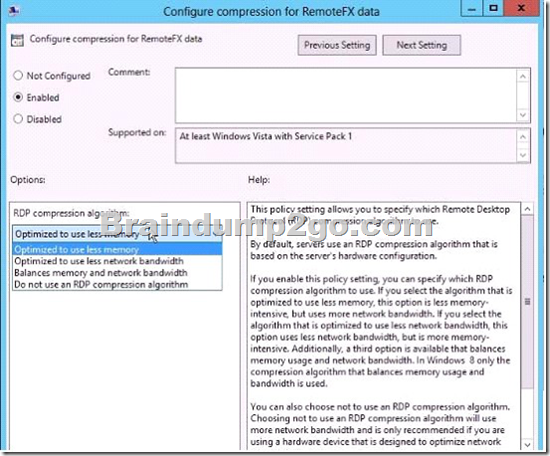
![wpsC53A.tmp_thumb[1] wpsC53A.tmp_thumb[1]](http://examgod.com/bdimages/59d058046080_E9E8/wpsC53A.tmp_thumb1_thumb.png)
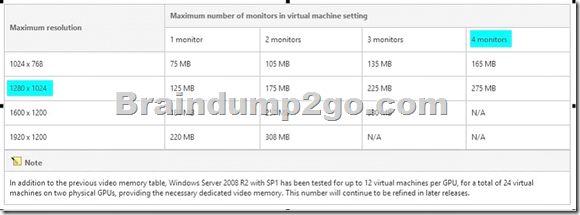
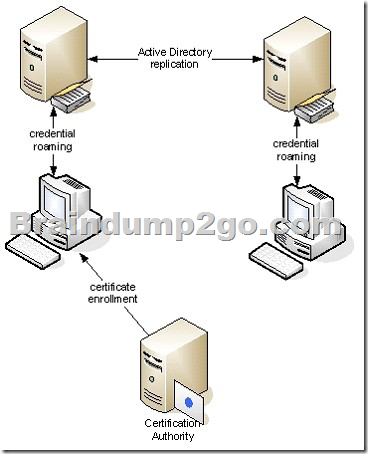
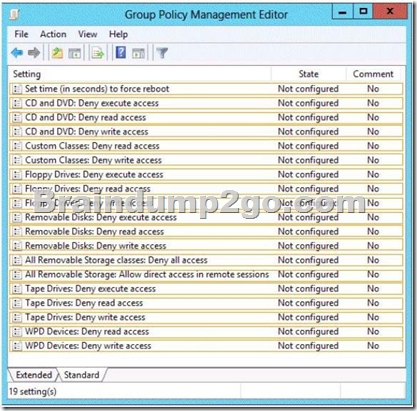
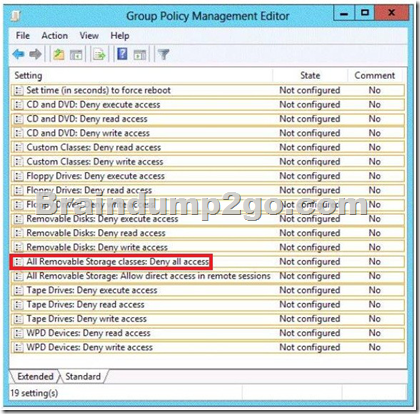
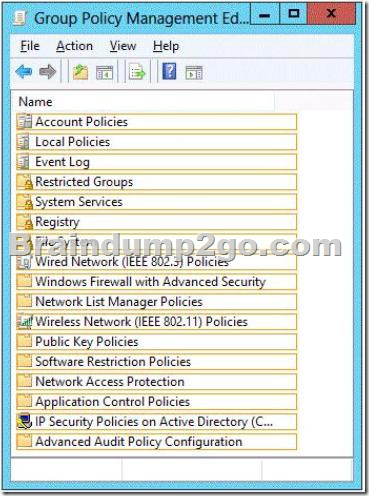
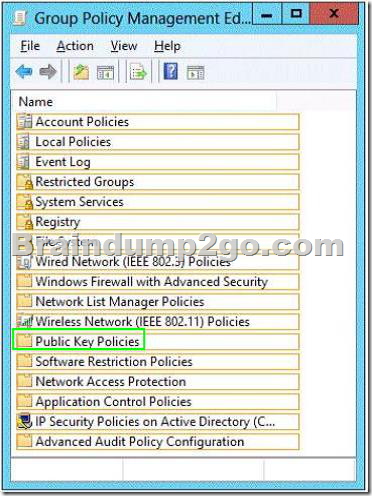

Comments are currently closed.